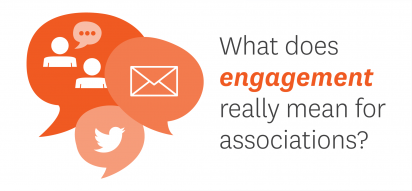relevent/ marketing ideas

The Pulse Report will be unveiled by Meagan Rocket, Director of Client Solution at Greenfield Services at the Engaging Associations Summit, taking place on July 24 and 25, 2014 at the Canadian Museum of Nature in Ottawa. (The 2014 Pulse Report will be made available after the summit and we will post a link here thereafter.)
This is worrisome on a number of levels.
The Engaging Associations Summit, which takes place on July 24 and 25, 2014 at the Canadian Museum of Nature in Ottawa, hopes to both address and facilitate discussions among association peers to collectively learn from each other and from renowned speakers on how to address these challenges. The purpose of the summit is for associations to share best practices and exchange top-level ideas with their peers — in other words, to engage. And to learn how engagement is absolutely critical for their association, on every single level.
We spoke with Doreen Ashton Wagner, Co-Founder, Chief Strategist and Managing Director at Greenfield Services (and organizer of the event), Jeff Hurt, EVP, Education and Engagement at Velvet Chainsaw, to find out what engagement really means for associations.
Doreen: The conversations we were having with executives and executive directors prompted the decision to create this event. The running theme was that “things are changing” and that they weren’t moving fast enough to change with the times.
Associations are losing members at an alarming rate, people are no longer responding the way they used to, prospects aren’t opening their email anymore.
We decided to run a focus group to confirm that there was a need and it was a resounding yes, the Engaging Associations Summit is an important event for all associations and will feature speakers like Mitchell Beer from SmarterShift, Rachel Stephan from sensov/ event marketing, and and Sherrif Karamat, COO at PCMA.
The thing is, associations are ready to bridge the generational issue with the use of social media but they are being met with resistance from the seasoned stakeholders who are resisting this change.
Jeff: A summit like this one is always necessary because it helps associations to become more professional and grow.
Doreen: I’m hoping that there will be a realization that they are not alone; it’s not just their field/industry/association that is feeling the pinch. There is a major shift across the entire industry. Everyone is facing these changes and we have much to learn from each other, and ideally we will generate possible solutions.
I am a firm believer that if you bring people together, the magic happens and this is the right platform for the conversation. It’s like an “associations support group,” if you will.
Jeff: I hope we meet some primary needs and provide ideas on stakeholder engagement. Ideally, it will paint a clearer picture of what associations can potentially become, as well as what their stakeholders can become.
Doreen: For many associations, engagement is the responsiveness of stakeholders – members, sponsors, exhibitors, community at large – but responsiveness implies that the stakeholder is passive unless you reach out to them and this isn’t necessarily true.
It’s true that the word “engagement” is being overused. For example, an issue of MPI magazine talked about how molecular cuisine at your event could save your engagement problems. Whenever there is a trending topic, the term will be overused, no doubt.
Jeff: It is an active experience, not something passive to be consumed. It is about co-creation, new knowledge, new outcomes, new directions. Associations need to see what’s coming down the pipe and bring forth any and all new products and trends to their stakeholders.
Doreen: For engagement to be successful you need an initiator and a responder; the more you initiate, the more they will respond. And you can’t focus on one medium, you need to make different attempts at reaching participants and they must be personal as well as online and off. Some great examples include reaching out on LinkedIn, writing handwritten letters, emailing them, and Tweeting at them. No matter what your touch point, though, it needs to be as personal as possible.
Engagement doesn’t end once they register, either. You need to reach out, find out what they expect to come away with from the event, what their pain points are, and adjust your event to meet and even exceed their expectations. Our mission is to understand our participants.
Once the summit concludes, we will of course measure the numbers, but we will do more than that. We are asking attendees to fill out “a-ha!” cards to help us better understand what they came away with during their time with us. We want to know if it was worth their time and what we can do to improve it for the next time. It has been an organic event thus far, growing and shaping itself in a manner that suits attendees and we are proud of that. For an event to work well, you need to be real and be flexible.
Jeff: Engagement means listening, interpreting and analyzing. In a conference or association setting, it is the level of mental thought and physical activity. Listening is critical and not in just one arena, but many arenas. Associations should be leading stakeholders to new arenas. Not all association members know what they don’t know.
Join us at the Engaging Associations Summit! If you can only make it in spirit, be part of the conversation with the hashtag #engageassn on Twitter.